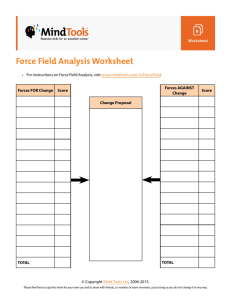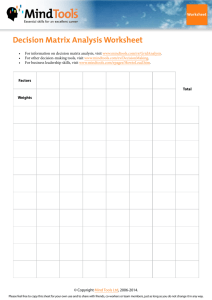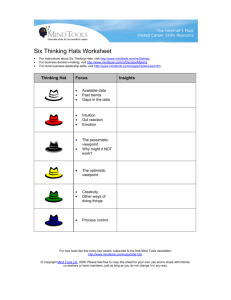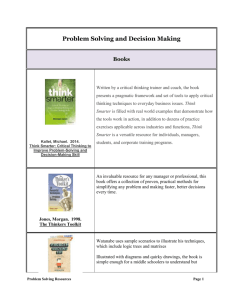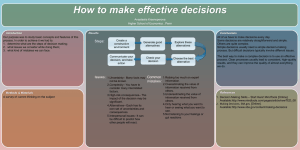Effective Scheduling
advertisement
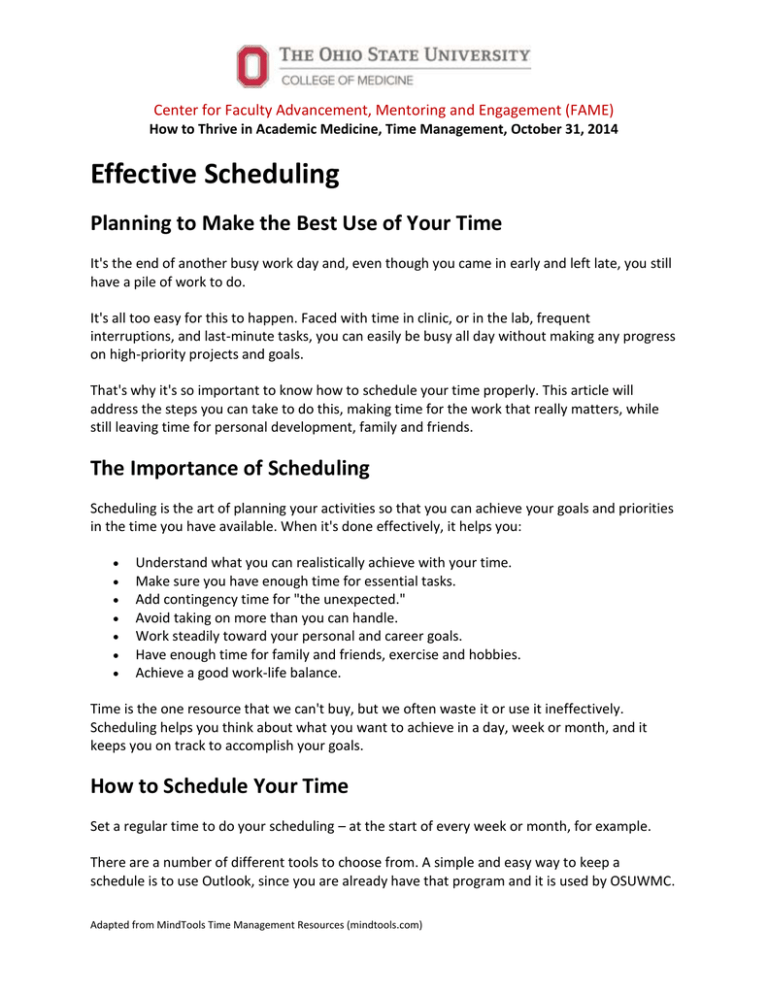
Center for Faculty Advancement, Mentoring and Engagement (FAME) How to Thrive in Academic Medicine, Time Management, October 31, 2014 Effective Scheduling Planning to Make the Best Use of Your Time It's the end of another busy work day and, even though you came in early and left late, you still have a pile of work to do. It's all too easy for this to happen. Faced with time in clinic, or in the lab, frequent interruptions, and last-minute tasks, you can easily be busy all day without making any progress on high-priority projects and goals. That's why it's so important to know how to schedule your time properly. This article will address the steps you can take to do this, making time for the work that really matters, while still leaving time for personal development, family and friends. The Importance of Scheduling Scheduling is the art of planning your activities so that you can achieve your goals and priorities in the time you have available. When it's done effectively, it helps you: Understand what you can realistically achieve with your time. Make sure you have enough time for essential tasks. Add contingency time for "the unexpected." Avoid taking on more than you can handle. Work steadily toward your personal and career goals. Have enough time for family and friends, exercise and hobbies. Achieve a good work-life balance. Time is the one resource that we can't buy, but we often waste it or use it ineffectively. Scheduling helps you think about what you want to achieve in a day, week or month, and it keeps you on track to accomplish your goals. How to Schedule Your Time Set a regular time to do your scheduling – at the start of every week or month, for example. There are a number of different tools to choose from. A simple and easy way to keep a schedule is to use Outlook, since you are already have that program and it is used by OSUWMC. Adapted from MindTools Time Management Resources (mindtools.com) Center for Faculty Advancement, Mentoring and Engagement (FAME) How to Thrive in Academic Medicine, Time Management, October 31, 2014 Tip: If you keep calendars in different programs (e.g. google for personal use or a shared family calendar and Outlook for work), use an app like gSyncit to sync them. This program also integrates with Evernote and others. Prepare your schedule in the following way: Step 1: Identify Available Time Start by blocking off the time you need to make available for your work. Step 2: Schedule Essential Actions Next, block in the actions you absolutely must do. For example, block off your clinic schedule, time to close your patient encounters, time to respond to patient inquiries and follow-ups. If you run a lab, make sure that you have enough time available to deal with team members' personal issues, coaching, and supervision needs. Also, allow time to communicate with key people around you. Step 3: Schedule High-Priority Activities Review your To-Do List, and schedule in high-priority activities, as well as essential maintenance tasks that cannot be delegated or avoided. Step 4: Schedule Contingency Time Next, schedule some extra time to cope with contingencies and emergencies. Experience will tell you how much to allow – in general, the more unpredictable your job, the more contingency time you'll need. Frequent interruptions can eat into your time. Refer to the Managing Interruptions Guide to learn how to manage them, which can reduce the amount of contingency time you need to set aside. Step 5: Schedule Discretionary Time The space you have left in your planner is "discretionary time": time that is available to deliver your priorities and achieve your goals. Review your prioritized To-Do List and personal goals, evaluate the time you need to achieve them, and schedule them in. Adapted from MindTools Time Management Resources (mindtools.com) Center for Faculty Advancement, Mentoring and Engagement (FAME) How to Thrive in Academic Medicine, Time Management, October 31, 2014 Step 6: Analyze Your Activities If, by the time you reach step five, you find that you have little or no discretionary time available, you need to go back through steps two, three and four, and question whether all of the tasks you've entered are absolutely necessary. It may be that some things can be delegated or tackled in a more time-efficient way. One of the most important ways that you can build success is by maximizing the leverage you can achieve with your time. Can you administer a survey to the patients in your clinic to collect the data you will need to write a protocol for a clinical trial? What tasks can you delegate to residents or postdocs? Can you use technology to automate some of your work? If you find that your discretionary time is still limited, then you may need to renegotiate your workload or ask for help. Use your newly prepared schedule as evidence of your heavy commitments. Key Points Scheduling is the process by which you plan how you'll use your time. Doing it well can maximize your effectiveness and reduce your stress levels. Follow this six-step process to prepare your schedule: 1. 2. 3. 4. 5. Identify the time you have available. Block in the essential tasks you must carry out to succeed in your job. Schedule high-priority urgent tasks and vital "housekeeping" activities. Block in appropriate contingency time to handle unpredictable events and interruptions. Schedule the activities that address your priorities and personal goals in the time that remains. 6. Analyze your activities to identify tasks that can be delegated, outsourced or cut altogether. It's important that your schedule makes time for your professional and personal goals. If you have little or no discretionary time left when you reach step five, revisit your tasks to see if you can do them differently – otherwise, your work-life balance will suffer. Adapted from MindTools Time Management Resources (mindtools.com)
